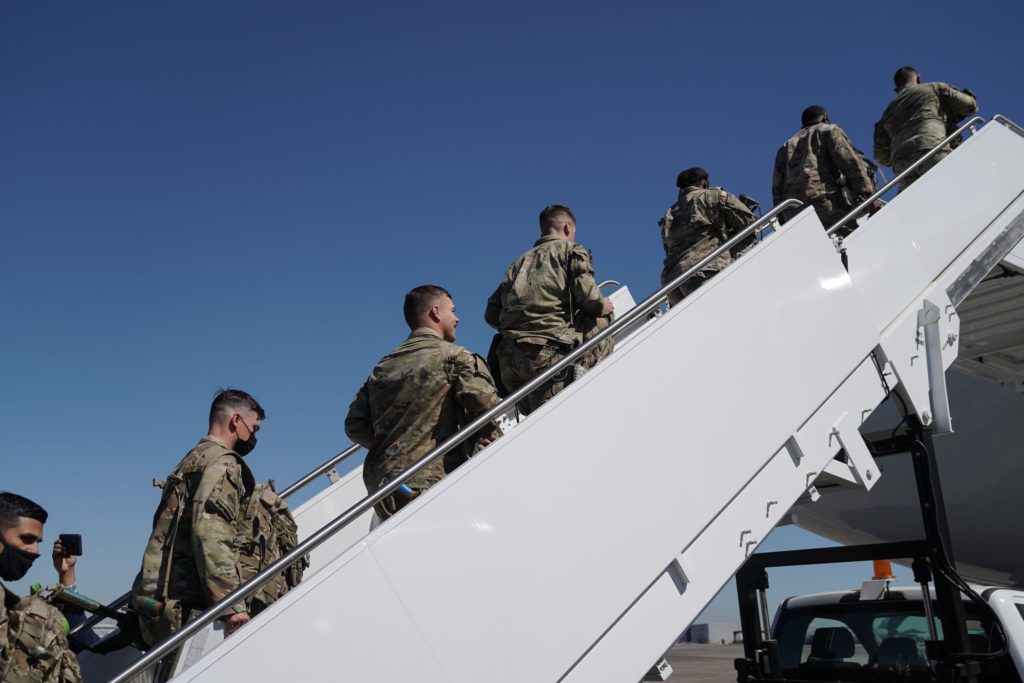(Bloomberg Government) — The Army would fall below 1 million soldiers for the first time in two decades under a new budget proposal as leaders struggle with recruitment in the aftermath of the coronavirus pandemic.
The active-duty Army would drop from the 485,000 soldiers Congress authorized for this year to 473,000, a reduction of 12,000 people, as part of the service’s fiscal 2023 budget proposal. When combined with flat National Guard and Reserve forces, the service would have a total of 998,500 soldiers.
The Army—the largest U.S. military service—is transitioning from two decades of counterterrorism missions in Afghanistan and the Middle East, and is seeking to fortify itself against challenges posed by China in the Pacific region and Russia in Eastern Europe following Vladimir Putin’s invasion of Ukraine.
The “pro-active” decision was driven by a focus on recruiting high-quality soldiers without lowering standards, and not by the need to free up money in the budget, said Gabe Camarillo, the undersecretary of the Army.
“We did not want, as we looked ahead at recruiting projections, to take any decrease in our quality,” to focus on high quality talent that can operate within the Army’s “cutting-edge” formations, Camarillo told reporters at a Pentagon roundtable.
Read more: Biden Pitches $5.8 Trillion Budget With a Record Tax Hike
The U.S. depends on a strong, all-volunteer military to carry out its foreign policy and defend strategic interests. With operations shifting to the realms of cyber, artificial intelligence, and hypersonic weapons, and China and Russia challenging U.S. leadership globally, the lack of qualified recruits could become a fundamental national security handicap.
‘Tight Labor Market’
Camarillo described the reduction as temporary with the Army expected to increase its numbers within the next five years.
“All employers, to include the Army, are facing significant challenges just as a result of a tight labor market that we see across our economy,” he said. “That creates a lot of the conditions that we are responding to.”
Army leaders are still analyzing whether the force will be reduced by lowering recruitment goals, early retirement offers, or through other means.
The Army for years has faced recruiting challenges and has worked to tailor its recruiting and advertising campaigns to attract the best people. Deficiencies in education, physical or mental fitness, or criminal records, have exacerbated the Army’s narrowing potential roster of recruits. Of 34 million people born after 1997, almost 4 of 5 Gen-Zers can’t qualify to serve in the largest military service, the Army’s data show.
Army Sweetens Recruiting With Almost 80% of Gen Z Unfit to Serve
Despite its higher authorization, the Army expects to only reach 476,000 soldiers in 2022, service leaders said.
National Guard and Reserve numbers wouldn’t go down and are projected to stay at 336,000 and 189,500 for fiscal 2023— the same as the levels authorized for this year.
‘Growth and Inflation’
The Army is requesting $178 billion for 2023, a $2.8 billion increase from this year’s levels approved by Congress. The topline number captures “a combination of real growth and inflation,” said Maj. Gen. Mark Bennett, the Army’s director of budget.
“We are able to maintain our momentum. We did not need to look at our modernization accounts as sources of major reductions of any kind,” said Camarillo.
The Army will continue with all of its modernization programs, several of which will go to units this year such as the Armored Multi-Purpose Vehicle, made by BAE Systems Plc., and the Long-Range Hypersonic Weapon made by Lockheed Martin Corp.
“The Army is presenting a very balanced approach overall that doesn’t take excessive risk and maintains the momentum going forward,” Douglas Bush, the Army’s top acquisition official, said at the same roundtable. The Army made “a conscious choice” to lower funding levels for programs such as the Abrams tank and the Stryker vehicle, both made by General Dynamics Corp., Bush said. The decision was made “prudently” and maintains a level that would keep the industrial base going and “healthy,” he added.
The Army procurement account would drop from $22.8 billion this year to $21.3 billion in fiscal 2023 under the budget request. Research and development funding would also drop from $14.5 billion this year to $13.7 billion in the fiscal 2023 request.
The Army’s personnel account would increase to $69.1 billion, a $3.2 billion boost, or almost 5%, over the $ 65.9 billion approved for this year. The account includes a pay raise of 4.6%, according to Army documents. It also includes $1.8 billion for special pay incentives to recruit and retain talent.
Congress will have the final say on the Army’s troop levels and budget when it authorizes and appropriates funding for the Pentagon for fiscal 2023.
To contact the reporter on this story: Roxana Tiron in Washington at rtiron@bgov.com
To contact the editors responsible for this story: Sarah Babbage at sbabbage@bgov.com; Meghashyam Mali at mmali@bloombergindustry.com
More stories like this are available on bloomberg.com
©2022 Bloomberg L.P.











